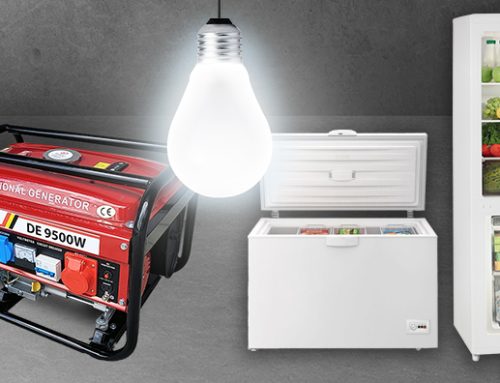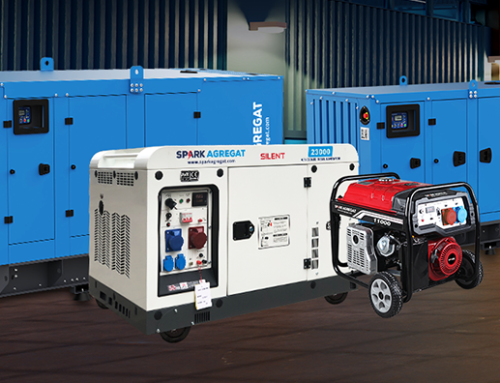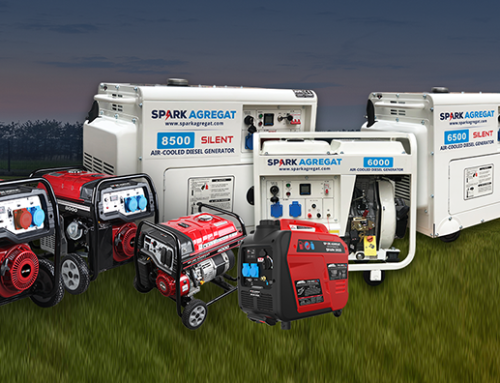A electric generator is an investment in your home or business’s electrical power supply, providing you with a reliable source of electricity during power outages or emergencies. However, like any other mechanical device, a electric generator requires regular maintenance to ensure optimal performance and longevity. Regular maintenance can help prevent costly repairs, extend the life of your electric generator, and ensure that your electric generator is ready to operate when you need it the most.
In this blog post, we will discuss the importance of maintaining your eletric generator and provide an overview of the steps you need to take to properly maintain your electric generator. By following these steps, you can ensure that your electric generator is operating at peak performance and will be there for you when you need it most.
Step 1: Read the User Manual for the generator
A electric generator is a complex machine with various parts and components that work together to produce electricity. It is essential to read the user manual before using your electric generator to ensure that you understand its features, functions, and operation. The user manual contains valuable information on how to operate, maintain and troubleshoot your electric generator, which is crucial for optimal performance.
Reading the user manual can help you avoid mistakes that could damage your electric generator or even cause injury. The manual provides information on safety precautions, such as the proper installation of the electric generator, fueling procedures, and electrical connections. It also includes the recommended maintenance schedule, which is critical to keep your generator in good working condition.
The user manual also contains information on the specifications and capacity of your electric generator. It is important to know the rated power output, fuel type, and fuel tank capacity, as these specifications determine the electric generator’s performance and fuel efficiency.
In summary, reading the user manual is the first step in maintaining your electric generator for optimal performance. The manual provides essential information on safety, operation, and maintenance, which is crucial for the longevity and efficiency of your electric generator.
Step 2: Check the generator’s fuel
A electric generator’s fuel is a critical component of its performance. Without proper fuel, a electric generator will not function properly, which is why checking the fuel is an essential step in maintaining a electric generator.
- Explanation of how to check the fuel:
To check the fuel, start by turning off the electric generator and allowing it to cool down completely. Next, remove the fuel cap and use a flashlight to inspect the fuel level. If the fuel level is low, add the appropriate fuel type to the generator. If the fuel has been sitting for a long time, it may need to be replaced entirely.
- Discussion of the importance of using the right fuel:
Using the wrong fuel can lead to engine damage and decreased performance. It is crucial to check the owner’s manual to ensure that you are using the appropriate fuel type for your electric generator. Using the wrong fuel can also result in a fire or explosion, which can be dangerous and costly.
Regularly checking and maintaining the fuel supply in your electric generator will help ensure that it runs optimally and efficiently, minimizing the risk of damage and ensuring you have power when you need it most.
Step 3: Change the oil and filters in the generator
A electric generator’s engine requires clean oil to function properly, and dirty oil can cause engine damage and reduce performance. Changing the oil and filters on a regular basis is essential for maintaining the electric generator’s optimal performance.
- Explanation of how to change the oil and filters
To change the oil and filters, follow these steps:
Turn off the electric generator and let it cool down.
Locate the oil drain plug and place an oil pan underneath it.
Remove the oil drain plug and drain the oil into the pan.
Remove the oil filter and replace it with a new one.
Refill the engine with the recommended type and amount of oil.
Start the electric generator and let it run for a few minutes to circulate the new oil.
Turn off the electric generator and check the oil level again.
- Discussion of the frequency of oil and filter changes
The frequency of oil and filter changes depends on the electric generator’s usage and the manufacturer’s recommendations. Typically, it is recommended to change the oil and filter after the first 20 hours of use and then every 100 hours or once a year, whichever comes first. However, if the electric generator is used frequently or in harsh conditions, it may need more frequent oil and filter changes. It’s important to check the user manual for specific guidelines on oil and filter maintenance.
Step 4: Inspect and clean the air filter in the generator
A electric generator’s air filter plays a crucial role in ensuring optimal performance and preventing damage to the engine. Over time, the air filter can become clogged with dirt and debris, reducing the flow of air to the engine and potentially causing it to overheat. That’s why it’s important to inspect and clean the air filter regularly, especially if you use your electric generator in dusty or dirty environments.
To inspect the air filter, first turn off the electric generator and allow it to cool down. Then, remove the air filter cover and take out the air filter. Check for any signs of damage, such as holes or tears, and replace the filter if necessary. If the filter looks dirty, gently tap it against a hard surface to remove any loose debris, or use compressed air to blow out any trapped dirt. Be careful not to damage the filter or let any debris fall into the carburetor.
Cleaning or replacing the air filter on a regular basis can help prevent engine damage, improve fuel efficiency, and extend the lifespan of your generator. Check the user manual for recommended maintenance intervals and procedures, and be sure to use the correct type of air filter for your electric generator.
Step 5: Check the Spark Plugs in the generator
Spark plugs are essential components of a electric generator’s ignition system. They create the spark that ignites the fuel in the engine’s cylinders. Over time, spark plugs can become dirty or corroded, which can cause them to misfire or fail altogether. Checking and replacing spark plugs is an important part of electric generator maintenance.
- Explanation of how to check the spark plugs
To check the spark plugs, start by removing the spark plug wire from the plug. Use a spark plug socket and ratchet to remove the plug from the engine. Check the spark plug for signs of wear or damage, such as cracks, corrosion, or fouling. If the spark plug is dirty, use a wire brush to clean it. If it’s damaged, replace it with a new one.
- Discussion of the importance of spark plug maintenance
Spark plugs that are dirty or damaged can cause a variety of problems with your generator. They can cause misfires, reduce fuel efficiency, and even damage the engine. By checking and maintaining your spark plugs, you can ensure that your electric generator runs smoothly and efficiently.
It’s also important to replace spark plugs periodically, even if they appear to be in good condition. Most electric generator manufacturers recommend replacing spark plugs every 100 hours of use or at least once a year. This helps ensure that the spark plugs are functioning properly and that your electric generator is running at optimal performance.
In conclusion, checking and maintaining your electric generator’s spark plugs is a critical part of electric generator maintenance. By doing so, you can avoid costly repairs and ensure that your electric generator is always ready when you need it.
Step 6: Inspect the Battery in the generator
A electric generator’s battery is essential to start the engine and keep it running. Without a functioning battery, your generator won’t be able to power your home or equipment during a power outage. Therefore, it’s crucial to inspect your electric generator’s battery regularly.
To inspect the battery, start by checking the terminals for corrosion. Corrosion can prevent the battery from charging and cause other electrical problems. If you notice corrosion, clean the terminals with a wire brush and a mixture of baking soda and water. Next, check the battery’s electrolyte levels and top off as needed with distilled water.
It’s also important to check the battery’s charge level. A battery that has been sitting unused for a long period may lose its charge, so it’s recommended to charge the battery at least once every three months. If you’re storing the electric generator for an extended period, remove the battery and store it in a cool, dry place.
Proper maintenance of the battery will ensure that your electric generator starts when you need it most. Neglecting the battery can lead to costly repairs or replacements, so it’s essential to add this step to your electric generator maintenance routine.
In the next section, we’ll discuss the final step to properly maintain your electric generator: testing the unit.
Step 7: Store the electric Generator Properly
A electric generator that is not properly stored can quickly deteriorate and fail when you need it the most. Proper storage will help keep your generator in good working condition and extend its lifespan.
To store your electric generator properly, follow these steps:
- Clean the electric Generator: Before storing your generator, it’s essential to clean it thoroughly. Remove any debris, dirt, or dust on the surface of the electric generator. Dirt and dust can cause the electric generator to overheat, leading to serious damage.
- Drain the Fuel: Fuel can go bad over time and cause problems for your electric generator’s engine. Therefore, it’s essential to drain the fuel tank and carburetor before storing the generator. Once the fuel is drained, start the electric generator and let it run until it stops. This will help burn off any remaining fuel in the system.
- Store the electric Generator in a Dry Place: The electric generator should be stored in a dry and covered place. Exposure to moisture can cause corrosion and rust, which can damage the electric generator’s components. A dry and covered area also protects the electric generator from dust and debris that can get inside and cause damage.
- Keep the electric Generator Charged: If you have a battery-powered generator, make sure to keep the battery charged. Check the battery every few months and recharge it if necessary. A discharged battery can freeze in cold temperatures, causing damage to the battery.
- Perform Regular Maintenance: Even when in storage, it’s essential to perform regular maintenance on your electric generator. Follow the manufacturer’s recommendations for maintenance and schedule periodic maintenance checks to ensure the electric generator is in good working condition when you need it.
Proper storage is critical to the performance and longevity of your electric generator. By following these steps, you can ensure that your electric generator is in excellent working condition when you need it most.
Conclusion
Properly maintaining your electric generator is essential for ensuring its optimal performance, extending its lifespan, and avoiding costly repairs. By following the steps outlined in this article, you can keep your electric generator in top condition and ready to use when you need it.
In summary, the steps to properly maintain your electric generator include reading the user manual, checking the fuel, changing the oil and filters, inspecting and cleaning the air filter, checking the spark plugs, inspecting the battery, and storing the electric generator properly.
Regular maintenance not only ensures your electric generator is always in good working condition, but it also ensures your safety and peace of mind during power outages or emergencies. Neglecting electric generator maintenance can lead to breakdowns, increased fuel consumption, and even cause severe damage to your appliances.
Therefore, we encourage you to follow the outlined steps and maintain your electric generator properly. Don’t wait until the last minute to check and maintain your electric generator, as this could cause unexpected and unpleasant surprises. A little investment in time and money spent on maintenance can go a long way in keeping your electric generator functioning at optimal levels, and most importantly, keeping you and your family safe during an emergency.
For further information or any inquiries, please don’t hesitate to contact us. Our dedicated team is here to assist you and provide all the details you need. You can reach us by calling the phone number 012350202 or by filling out the contact form.
























